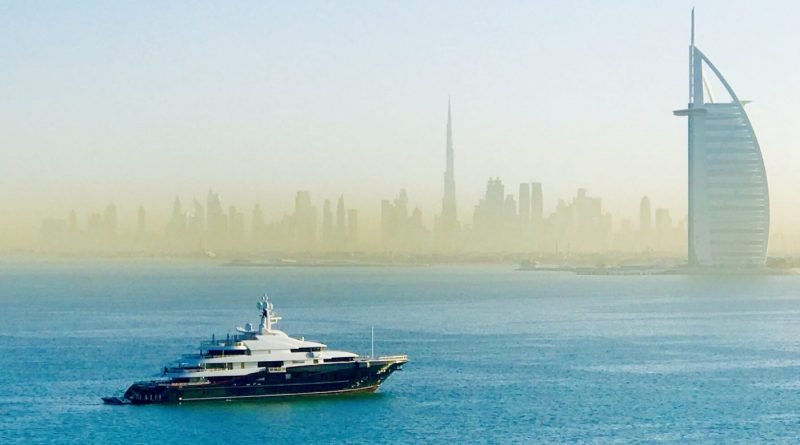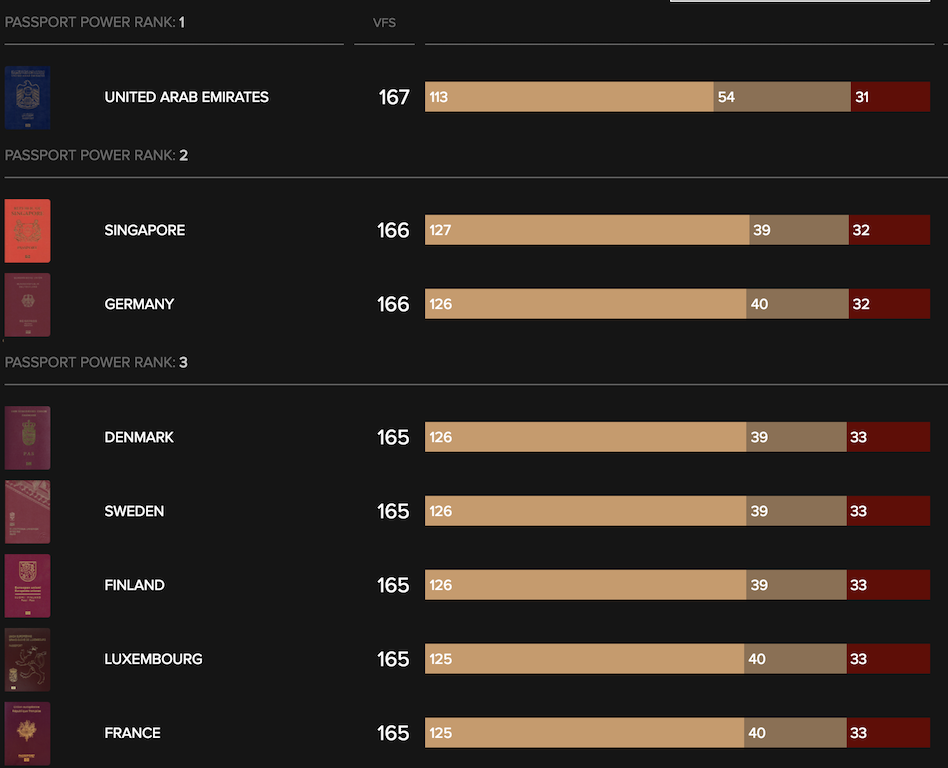Analysis: Is the UAE Passport REALLY the World’s Strongest?
After we last week reported on the Arton Capital Passport Index’ ranking of the UAE-passport as the world’s strongest, a number of readers wrote in suggesting that the methodology by which the index had arrived at that conclusion had several important shortcomings.
A note from the editor: Although I am frequently accused of doing so, I do not wish to “take sides” as to which one of the several passport indices is better, because that depends on the definition of “better”.
And how you define “better” – in turn – depends on the purpose of the index; is it to provide the most accurate information to international travelers? Is it to gain recognition and generate sales? Is it to bring awareness of citizenship by investment to a mainstream audience?
While within this article I point out weaknesses in the methodology of the Arton Capital Passport Index, I simultaneously recognize that more than 15 million web users have been exposed to the concept of citizenship by investment thanks to the proliferation of the ranking.
News of the UAE taking
But it looks as though, in pursuit of that very serendipitous confluence of events, the authors of the index may have granted the UAE passport a slight methodological boost.
How you count matters
When looking into the subject, I counted through the respective passports’ destination lists individually because the scores listed on the global ranking page did not mirror the score when counting one-by-one. I’ll explain why that is later.
On the Arton Capital Passport Index,
UAE citizens have
- Ordinary visa-free access to 110 destinations.
- Unconditional visa-on-arrival access (not pre-visa-on-arrival, or e-visa, or eTA, or tourist card) to 40 destinations.
A total of 150 visa-free destinations
Compare this to the other top passports of Germany, Singapore, South Korea, and Japan.
On the same index,
German citizens have
- Ordinary visa-free access to 120 destinations
- Unconditional visa-on-arrival access (not pre-visa-on-arrival, or e-visa, or eTA, or tourist card) to 31 destinations.
A total of 151 visa-free destinations
Singaporean citizens have
- Ordinary visa-free access to 127 destinations
- Unconditional visa-on-arrival access (not pre-visa-on-arrival, or e-visa, or eTA, or tourist card) to 30 destinations.
A total of 157 visa-free destinations
Japanese citizens have
- Ordinary visa-free access to 116 destinations
- Unconditional visa-on-arrival access (not pre-visa-on-arrival, or e-visa, or eTA, or tourist card) to 36 destinations.
A total of 152 visa-free destinations
South Korean citizens have
- Ordinary visa-free access to 116 destinations
- Unconditional visa-on-arrival access (not pre-visa-on-arrival, or e-visa, or eTA, or tourist card) to 37 destinations.
A total of 153 visa-free destinations
To sum it up (ordinary visa-free + visa-on-arrival = total visa-free destinations):
- Singapore: 127+30 = 157
- South Korea: 116+37 = 153
- Japan: 116+36 = 152
- Germany: 120+31 = 151
- UAE: 110+40 = 150
By the Passport Index’ own data, then, the UAE is neither first in ordinary visa-free destinations, nor in visa-on-arrival destinations, and consequently not in total visa-free access either. Singapore, in particular, has the UAE beaten by a wide margin.
So how can UAE be hailed as number one?
According to the website’s global ranking, the UAE has ordinary visa-free access to 113 countries, and visa-on-arrival for 54, which makes for a combined score of 167, higher than any other passport.
How did they arrive at that number when the individual count shows a different picture?
Well, if you compare the UAE passport and count the destinations marked in yellow – the Canadian ETA, the Indian e-visa, and the UK’s Electronic Visa Waiver – as ordinary “visa-free” destinations, you arrive at a total number of visa-free destinations of 113.
And, if you add up all the destinations marked blue – which lumps visa-on-arrival together with e-visa, pre-e-visa-on-arrival, and tourist card – you get 54.
So, the index arrived at a score of 167 for UAE by counting travel authorizations as equivalent to visa-free, and by counting e-visas as equivalent to visa-on-arrival.
But here’s the problem with counting in this way:
An e-visa, as opposed to visa-on-arrival, requires advance approval and preparation
The reason it’s important to distinguish between visa-free, visa-on-arrival, tourist card, pre-visa-on-arrival, and e-visas is that while the former two categories – visa-free and visa-on-arrival – allow an applicant to simply pack up and go to the destination in question without preparation, the latter three categories do not.

That’s because e-visas, electronic travel authorizations, pre-visa-on-arrival, and tourist cards – even though they are usually quicker and simpler to obtain than common visas – involve applications and, as such, effectively amount to visas.
Crucially, they require advance preparation, usually many days prior to departure, and are not always approved.
It is, therefore, inappropriate to categorize a destination that requires an e-visa, a “pre-visa”, or a tourist card as “visa-free”.
And, if you subtract the destinations that require an e-visa, an ETA, or a tourist card, the UAE’s actual number of visa-free destinations falls to 150.
Still very good, and certainly primus inter pares in its region, but not quite the world champion.
An additional methodological adjustment is required
The index does not account for subnational destinations with visa-policies separate from the countries to which they are annexed. Arton should rectify this to improve the index’ accuracy.
The Arton Capital Passport Index’ methodology considers a total of 193 UN member states as well as six territories that issue passports of their own; Hong Kong, Macau, Taiwan, Kosovo, Palestine, and the Vatican.
It does not count territories annexed to other countries, such as Norfolk Island (Australia), French Polynesia (France), or the British Virgin Islands (Britain).
The British Virgin Islands formally belong to the UK, but having visa-free access to the UK mainland does not mean you have visa-free access to the BVI. Since annexed territories, like the BVI, are autonomous with regards to visa-policy, it would be more appropriate to count these as well.
Christian Henrik Nesheim is the founder and editor of Investment Migration Insider, the #1 magazine – online or offline – for residency and citizenship by investment. He is an internationally recognized expert, speaker, documentary producer, and writer on the subject of investment migration, whose work is cited in the Economist, Bloomberg, Fortune, Forbes, Newsweek, and Business Insider. Norwegian by birth, Christian has spent the last 16 years in the United States, China, Spain, and Portugal.




